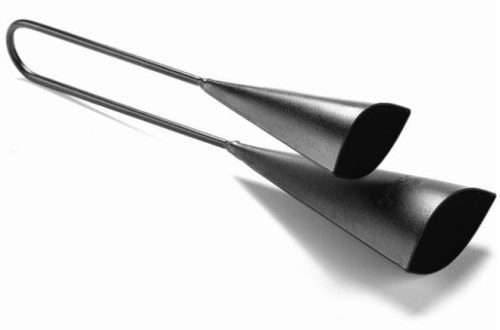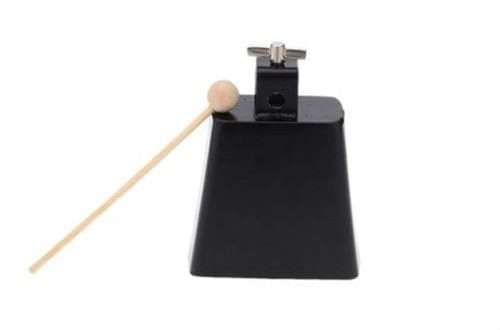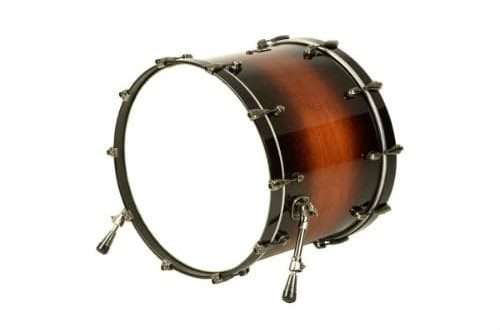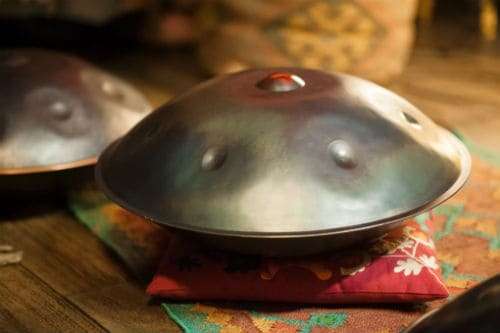
Hang: what is it, instrument composition, sound, how to play
Contents
Most musical instruments have an ancient history: they existed in the distant past, and only slightly transformed, adjusting to modern requirements for music and musicians. But there are those that appeared quite recently, at the dawn of the XNUMXst century: having not yet become mega-popular, these specimens have already been appreciated by true music lovers. Hang is a great example of this.
What is hang
Hang is a percussion instrument. Metal, consisting of two hemispheres interconnected. It has a pleasant organic sound, in fact, it resembles a glucophone.
It is one of the youngest musical inventions in the world – created at the dawn of the millennium by the Swiss.

How is it different from a glucophone
Hang is often compared to a glucophone. Indeed, both instruments belong to the class of idiophones – constructions, the sound source of which is directly the body of the object. Idiophones do not require special manipulations to extract sound: strings, pressing buttons, tuning. Such musical constructions were created in antiquity, their prototypes can be found in any culture.
Hang is really strikingly similar to a glucophone: in appearance, in the way of extracting sound, in formation. The difference from a glucophone is as follows:
- The glucophone is more rounded, the hang resembles an inverted plate in shape.
- The upper part of the glucophone is equipped with slits resembling petals, the lower part is equipped with a hole for sound output. The hang is monolithic, there are no pronounced slots.
- The sound of the hang is more sonorous, the glucophone produces less colored, mediative sounds.
- A significant difference in cost: the price of a hang is at least a thousand dollars, a glucophone is from a hundred dollars.
How the tool works
The device is quite simple: two metal hemispheres are interconnected. The upper part is called DING, the lower part is called GU.
The upper part has 7-8 tonal areas, forming a harmonious scale. Exactly in the center of the tonal field is a small hole – a sample.
In the lower part there is a single resonator hole, 8-12 centimeters in diameter. Influencing it, the musician changes the sound, extracts bass sounds.
This hang is made only from high-quality nitrided steel, subjected to pre-heat treatment. The thickness of the metal is 1,2 mm.

History of creation
Year of birth of the instrument – 2000, place – Switzerland. Hang is the fruit of the work of two specialists at once – Felix Rohner, Sabina Scherer. They studied resonating musical instruments for a long time, and one day, following the request of a mutual friend, they undertook to develop a new type of steelpan – a smaller one that allows you to play with your hands.
The original design, which received the test name pan drum (pan drum), was somewhat different from today’s models: it had bulky dimensions, less streamlined shape. Gradually, the developers, through numerous experiments, made the hang attractive in appearance, as functional as possible. Modern models easily fit on your knees, without causing trouble to the musician, allowing you to extract sounds while enjoying the process of playing.
Internet videos with a new musical instrument blew up the global network, aroused interest among professionals and amateurs. In 2001, the first batch of industrial hangs was released.
Further, the production and sale of new products was either suspended or revived. The Swiss are constantly working, experimenting with the appearance of the instrument, its functionality. In recent years, it seems possible to purchase a curiosity only via the Internet: the official company produces products in limited quantities, while simultaneously improving the sound of the instrument.

How to play hang
Hang Play is available to any category: amateurs, professionals. There is no single system for teaching how to play the instrument: it does not belong to the academic category. Having an ear for music, you can quickly learn how to extract divine, unreal sounds from a metal structure.
Sounds are produced by finger touches. Most often due to the following movements:
- Hitting with the pillows of the thumbs,
- Touching the tips of the middle, index fingers,
- With palm strikes, with the edge of the hand, with the knuckles.
When playing the instrument, it is usually placed on the knees. Any horizontal surface can serve as an alternative.
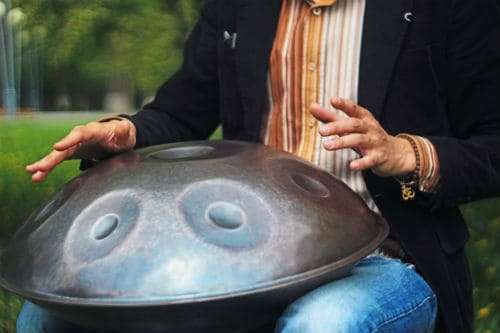
The influence of magical sounds on a person
Hang is a modern invention based on ancient traditions. It is akin to gongs, Tibetan bowls, African drums used by shamans in magical rites. The mediative sounds emitted by metal are considered to be healing, able to have a beneficial effect on the soul, body, and mind.
Being the “heir” of ancient traditions, hang is actively used by healers, yogis, and spiritual mentors. The sounds of the instrument relieve internal tension, fatigue, reduce stress, relax, charge with positive. These practices are relevant for residents of metropolitan areas. Ideal for meditation, sound therapy sessions.
Recently, a new direction has appeared – hang-massage. The specialist places the instrument on top of the patient’s body, plays it. Vibrations, getting inside the body, have a healing effect, charge with positive energy. The procedure is used for preventive and therapeutic purposes.
It is useful to play the instrument on your own: such activities help to hear the “voice” of the soul, determine one’s own needs, purpose, and find answers to exciting questions.
Hang was nicknamed the “cosmic” design quite deservedly: bewitching, unusual sounds bear little resemblance to the “language” of instruments previously invented by mankind. The ranks of fans of the mysterious composition, which looks like a flying saucer, are growing exponentially.



